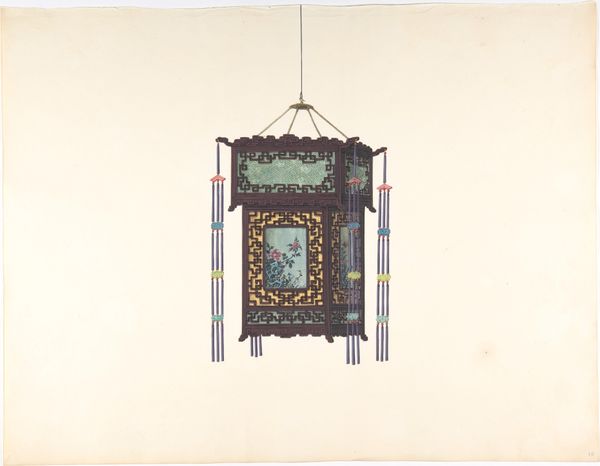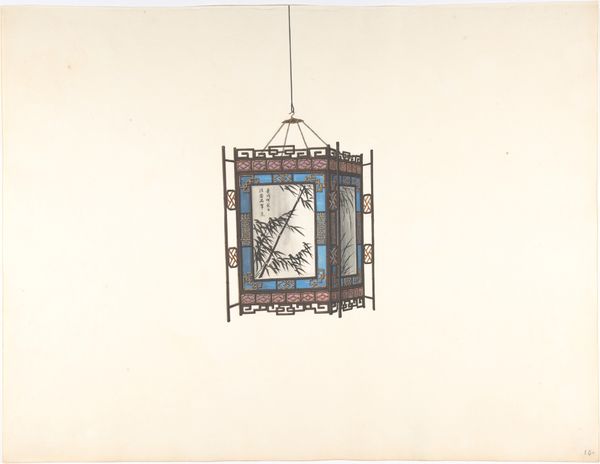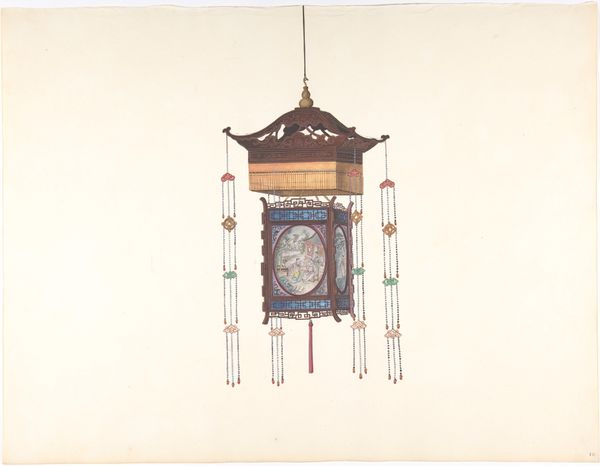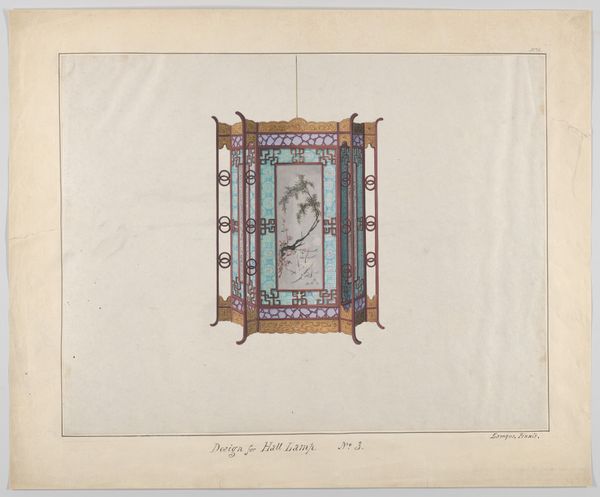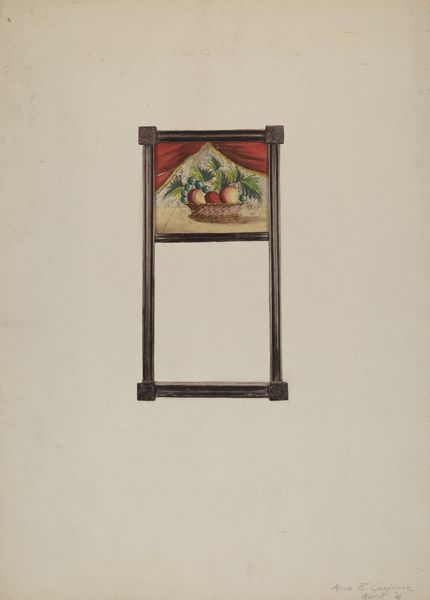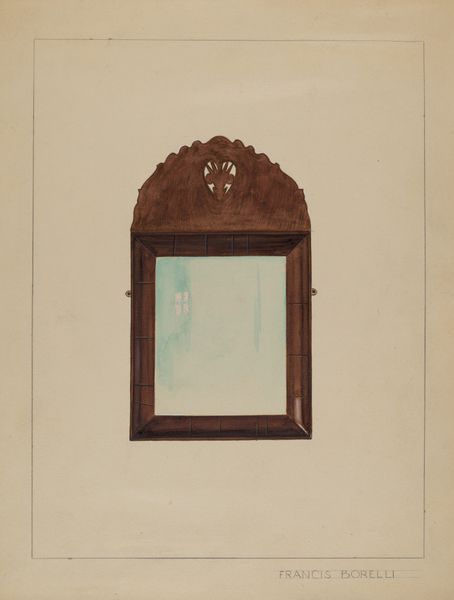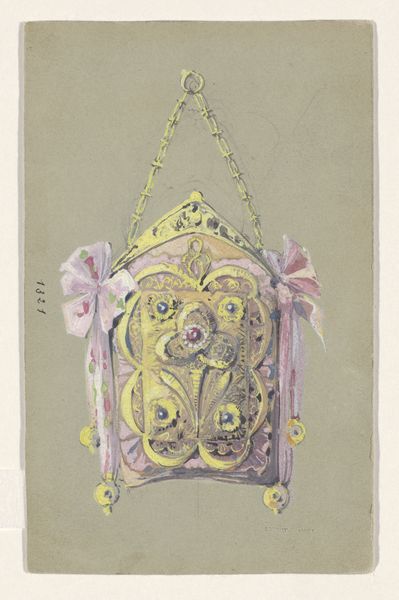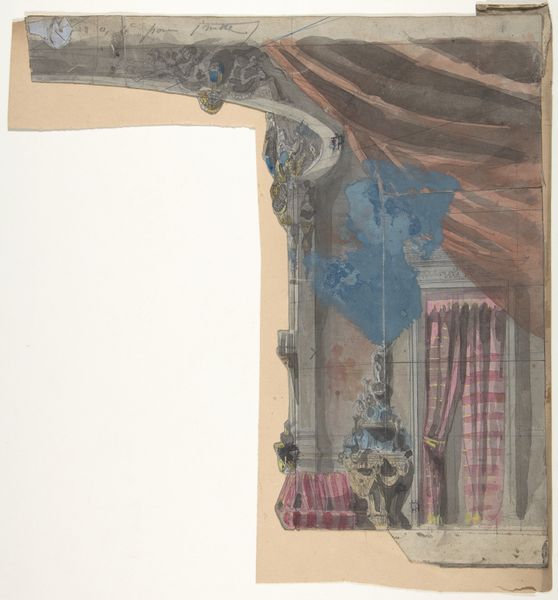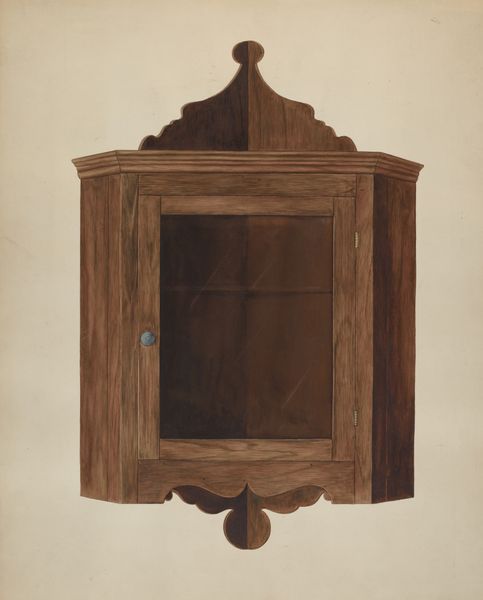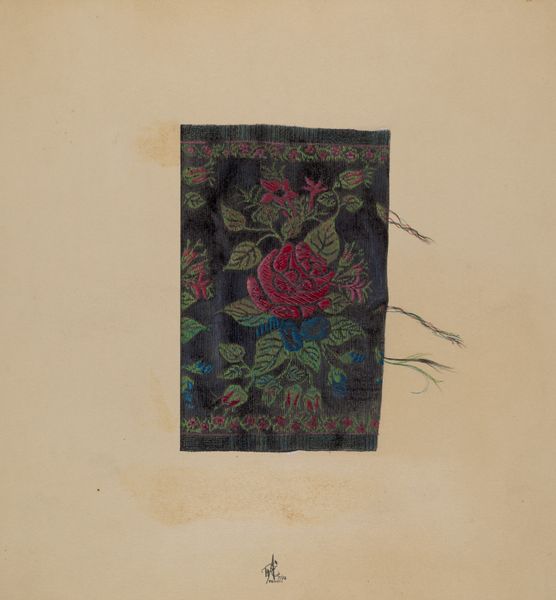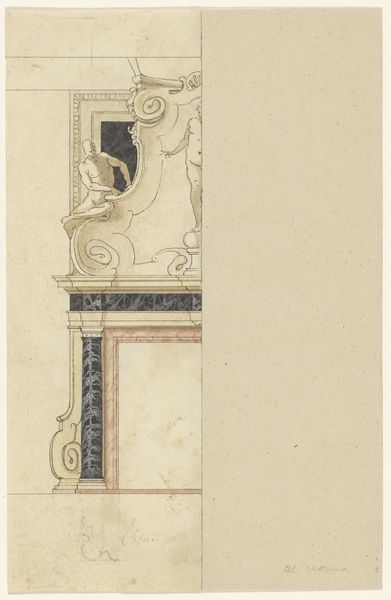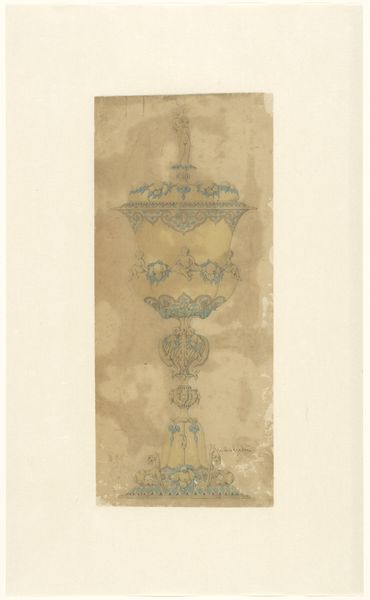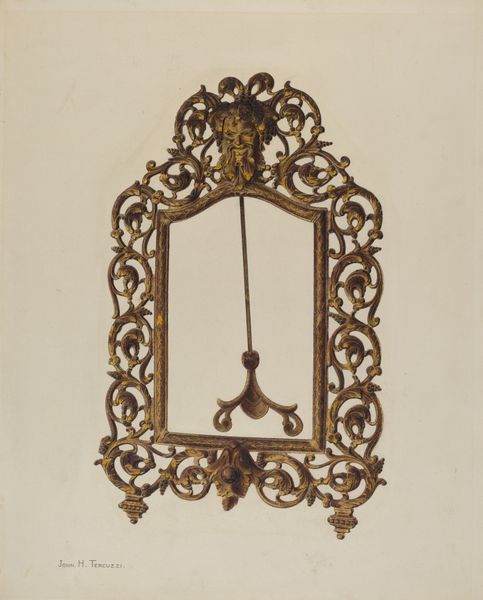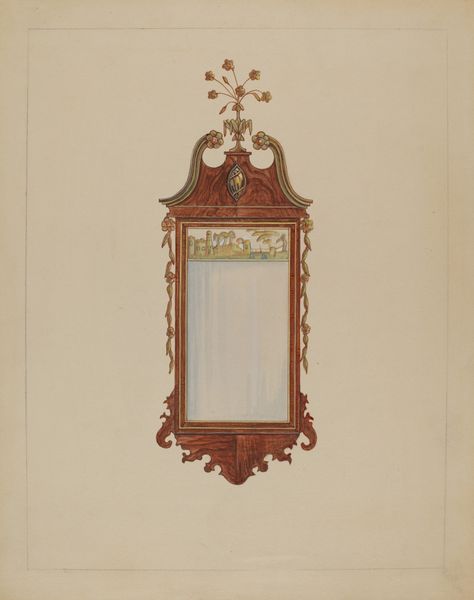
drawing, print, watercolor
#
drawing
#
water colours
# print
#
asian-art
#
watercolor
#
geometric
#
line
#
decorative-art
#
watercolor
Dimensions: Overall: 14 1/8 x 18 3/8 in. (35.9 x 46.7 cm)
Copyright: Public Domain
Curator: Let's discuss this exquisite "Hanging Lantern," an anonymous work from between 1800 and 1900, currently held at the Metropolitan Museum of Art. It appears to be executed in watercolor, possibly with printmaking elements to enhance the linework. What are your initial thoughts? Editor: It feels incredibly delicate and refined. The muted colours—the pale greens, lavenders, and golds—create a tranquil, almost ethereal atmosphere. The craftsmanship itself speaks to a specific societal context, doesn’t it? Curator: Precisely. We can delve into the means by which this lantern, or rather the image of it, was produced. The use of watercolor and printmaking suggests a degree of reproducibility, making it potentially accessible beyond the elite circles. Editor: True, but let's not forget the context. Hanging lanterns, especially ones this decorative, weren’t just functional items; they were powerful symbols of status and cultural identity in the 19th century. Who made it? What were their social standing? And whom was this artwork trying to reach and influence? These elements all reflect the complexities of class and cultural expression. Curator: That's insightful. We also need to consider the materials themselves. The choice of delicate paper and watercolors, combined with the precision of the printed lines, points to a conscious elevation of craft to an art form, a trend emerging as industrialization threatened traditional skills. Editor: Absolutely! And within the lantern’s panels, we see miniature landscapes, hinting at literati painting traditions. This intertwining of geometric design, fine art, and functionality reflects the dynamic cultural exchange happening at the time. Who created and designed the landscape depicted and how was their social background? Were these landscapes available to everyone to wander around? Or reserved to wealthy people? The symbolism it projects speaks volumes about its historical significance. Curator: So, by analyzing its material components, artistic processes, and potential for dissemination, we gain a window into the social fabric of the time. Editor: Indeed. By understanding the power dynamics at play in the lantern’s creation, and representation, we start to understand the narrative around access, privilege, and aesthetics inherent in its design. Curator: Looking closer at the piece allows us to appreciate not just its visual appeal, but the complex story embedded within the layers of its creation. Editor: Exactly! It is through this critical lens we see how art embodies both its inherent aesthetic qualities and socio-historical fingerprint.
Comments
No comments
Be the first to comment and join the conversation on the ultimate creative platform.
